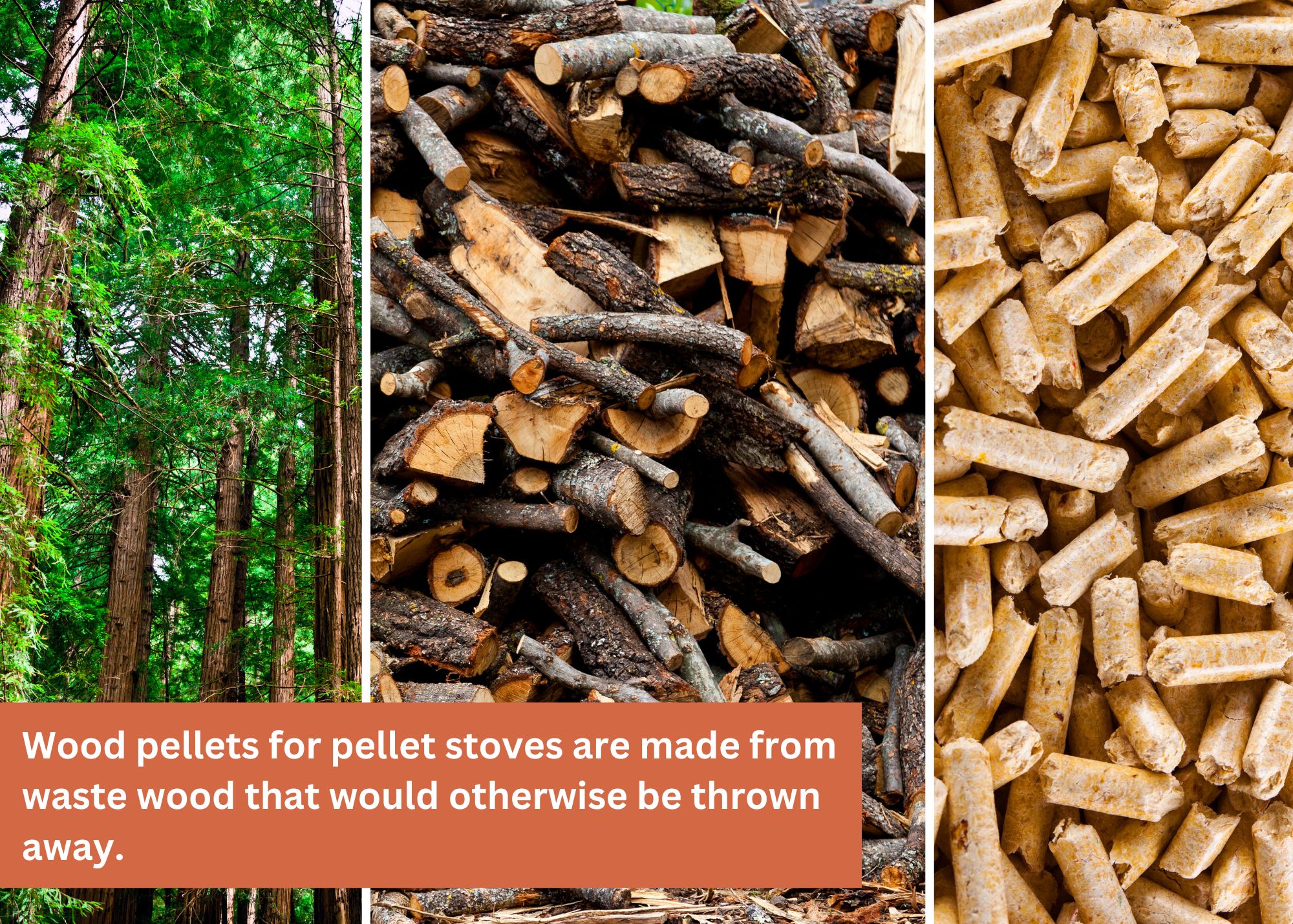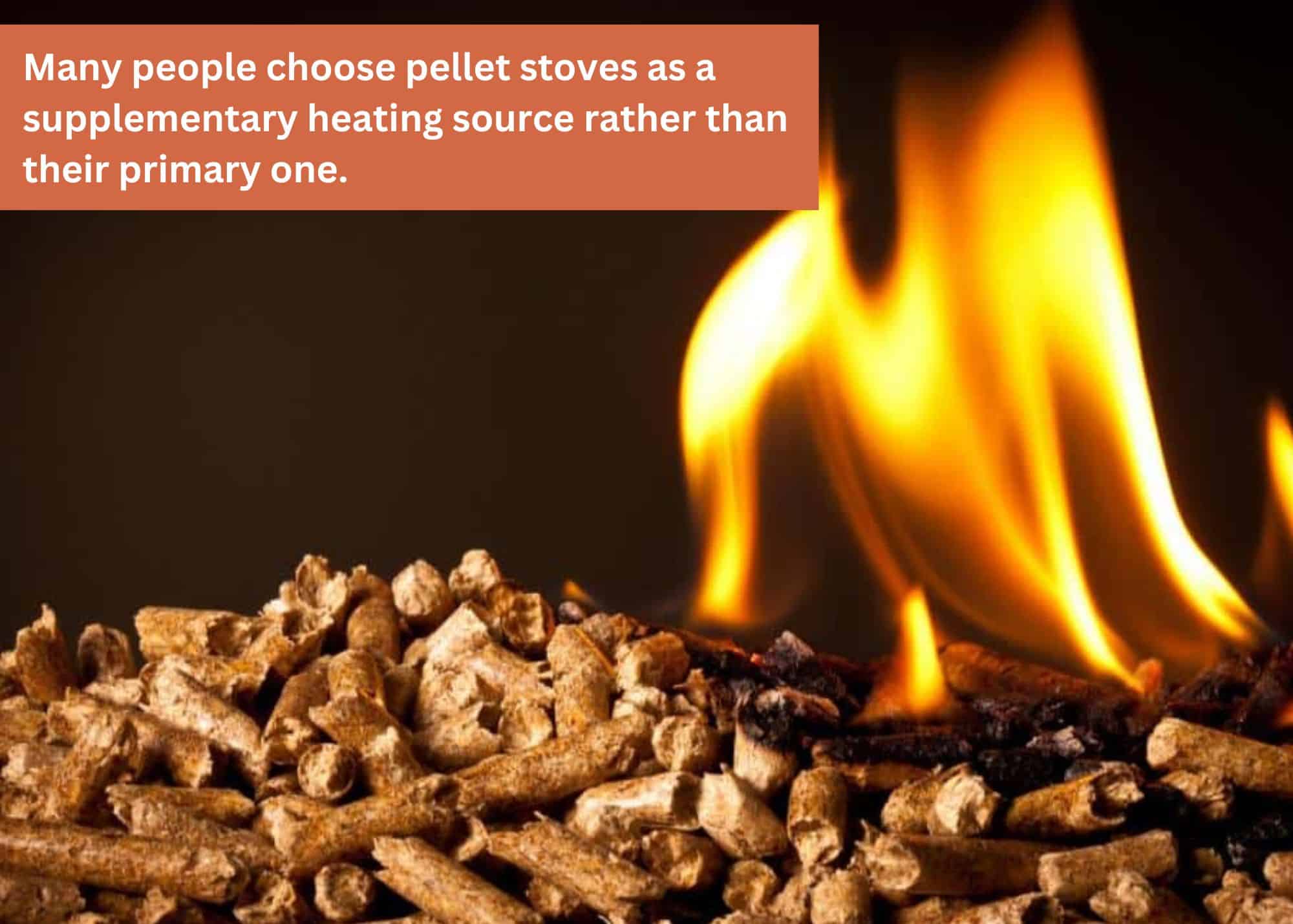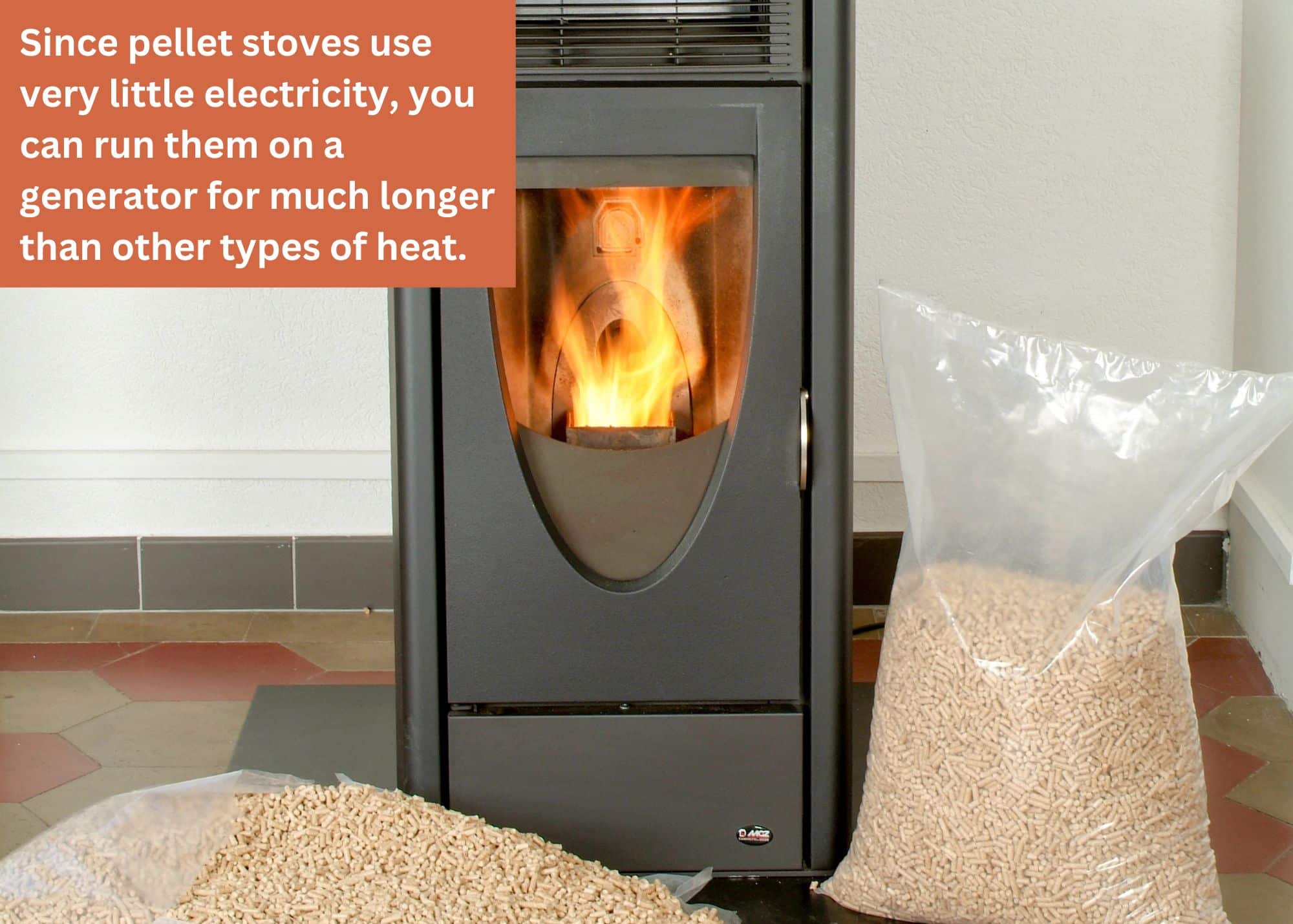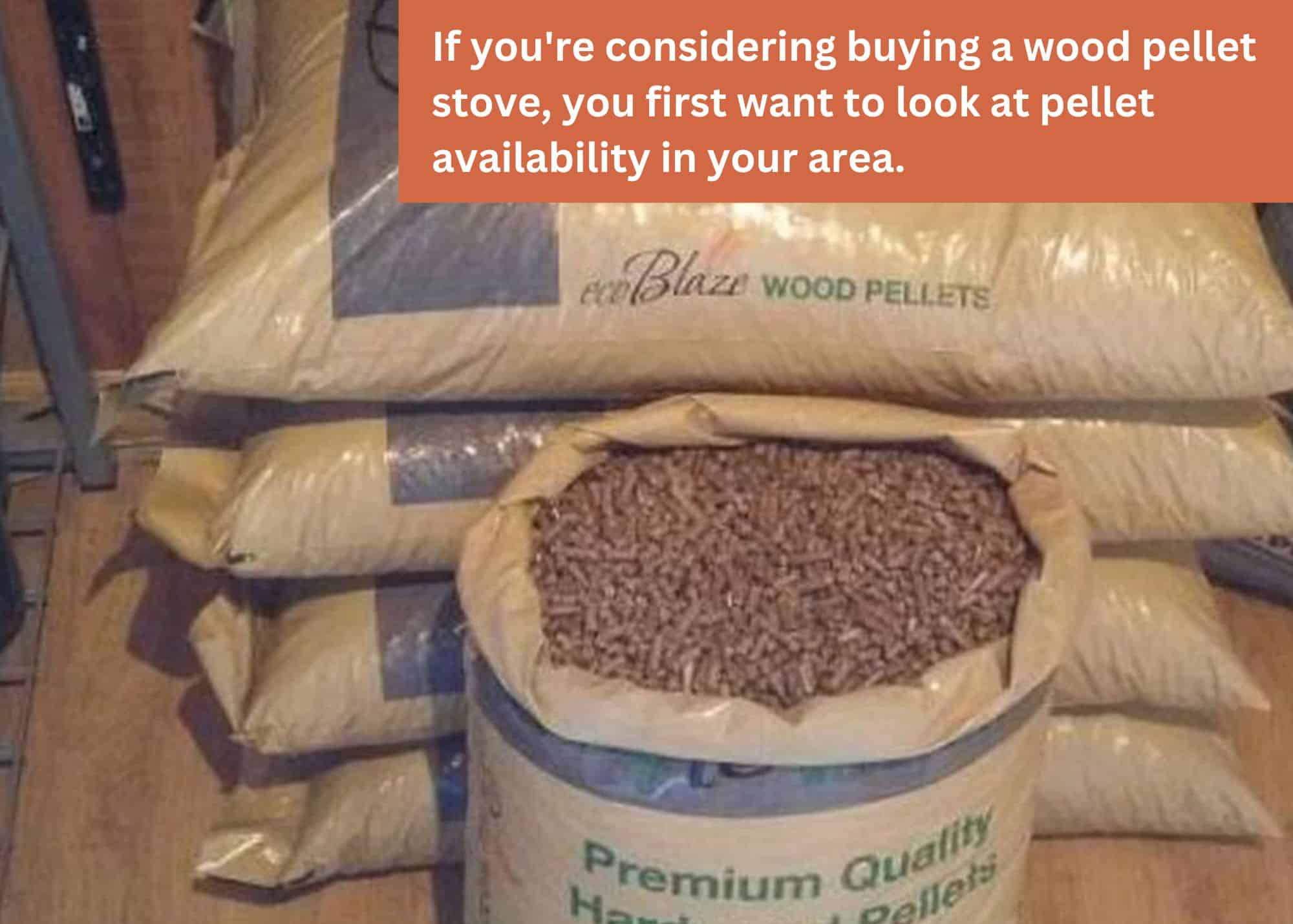Wood Pellets: Are They the Heating Option That’s Right for You?
Table of Contents:
Are you pulling on extra sweaters this winter, sipping hot drinks, and trying to keep a positive attitude as your outdated furnace struggles to keep up with frigid temperatures?
If your current heating system is wearing out, if you’re tired of paying high electricity bills, or if you’re looking for a more sustainable heating system, you may be looking into wood pellets as a good heating source for your home.
Here at Terrascape Supply, we interact with many pellet stove owners as we sell our premium wood pellets. Today, we’ll explore wood pellets. What are the pros and cons? What do pellet stove owners wish they knew before purchasing one? How do they compare to other heating methods?
Read on to find out!
How Do Pellet Stoves Work?
Pellet stoves are designed to be similar to wood stoves in their warmth and ambiance while being more energy efficient and easy to use.

Since they burn wood pellets made from scrap wood, they’re also one of the most sustainable heating options available.
A pellet stove has a hopper that stores enough wood pellets for several hours or even days, depending on the size. You must refill this hopper manually with bags of wood pellets you can buy from your local pellet supplier. Then, an auger system automatically feeds the wood pellets from the hopper into the burn pot at a controlled rate.
Pellet stoves use an electric igniter to start the fire, and a combustion fan provides airflow to sustain efficient burning. A heat exchanger warms the air, which is then circulated into the room by a blower fan. The pellet stoves vent smoke and gases outside through a small pipe.
Pellet stoves come with thermostats, and they can automatically adjust their temperature, which makes them easier to operate than wood stoves. They’re also more energy-efficient (70-90%) than wood stoves (50-80%). However, all those extra parts need to be maintained, and since pellet stoves require electricity to run several components like the ignition system and the blower fan, it can’t run off-grid like a wood stove can.
Later, we’ll go into more detail comparing pellet stoves to other heating systems. But for now, let’s dive into the basic pros and cons of pellet stoves!
Pros and Cons of Pellet Stoves
Some people find pellet stoves a great option, while others find them high-maintenance and insufficient for their needs. Let’s examine their strengths and drawbacks.
Pros of Pellet Stoves
- High-Efficiency Ambiance: Like wood stoves or fireplaces, pellet stoves create a cozy, warm area in your home where you can gather with your family, swapping stories of your day while watching the dancing flames. If that’s the vibe you’re going for, pellet stoves are the most energy-efficient option and are easier to operate.
- Eco-Friendly: Wood pellets for pellet stoves are made from waste wood that would otherwise be thrown away, such as sawdust from sawmills and wood shavings left over from furniture production. Thus, pellet stoves are one of the most eco-friendly heating options.

Cons of Pellet Stoves
- Maintenance: If you talk to pellet stove owners who regret their purchase, they usually cite maintenance as the #1 factor.
Other Aspects to Consider
Not every aspect of a pellet stove is a clear “pro” or “con.” Let’s look at some considerations that may be pros or cons depending on your situation or preference.
- Cost: Pellet stoves might be a cost-effective option where you live, or they may not. It depends on the availability of wood pellets vs other heating options.
- Electricity Usage: Unlike wood stoves, pellet stoves are not off-grid, so they won’t heat your house if the power goes out. However, they use so little electricity that you can run your pellet stove with a generator much longer than you can run other electricity-dependent heating systems.
- Dryness: Pellet stoves produce dry heat, which is fantastic for heating damp spaces like basements. However, you may not like the drying effect in your main living space.
- Ventilation: Pellet stoves heat from a central location, so they work great with an open floor plan, but it might take some work to vent that heat into every room of your house if you want the pellet stove as your primary heating source.
These factors are why many people choose pellet stoves as a supplementary heating source rather than their primary one.

But before we get into that, let’s explore exactly how pellet stoves compare to other popular heating methods.
Comparing Pellet Stoves to Other Heating Methods
The most popular heating methods in the USA include:
- Forced-Air Furnaces (Gas, Electric, or Oil)
- Boilers (Gas or Oil)
- Electric Baseboard Heaters
- Heat Pumps (Air-Source or Geothermal)
- Radiant Floor Heating
- Wood Stoves
Let’s compare these heating sources to pellet stoves across several metrics.
Cost
This varies considerably, as energy costs fluctuate and depend on where you live. However, they are generally cheaper than electric baseboard heaters and oil heating.
Convenience
Pellet stoves tend to be less convenient than most heating options but more convenient than wood stoves.
Energy Efficiency
Pellet stoves are an extremely energy-efficient heating option compared to other methods.
Emergency Heat
In an emergency, the best heating option is something off-grid, like a wood stove. However, pellet stoves can also be a good option if you have a generator to run the electricity-dependent components. Since pellet stoves use very little electricity, you can run them on a generator for much longer than other types of heat.

Supplementary Heat
Like wood stoves, pellet stoves are an excellent option for supplementary heat. For example, in extremely cold weather events, a heat pump cannot keep up, and a pellet stove is a great way to add warmth. It’s also convenient for those in-between months in Fall and Spring, when you need a little heat on chilly mornings but don’t want to go through the expense and bother of running the furnace when things will warm up by midday.
Things to Consider When Buying a Pellet Stove
As you consider buying your pellet stove, here are the most important things to consider:
Usage
In some cases, you may choose a pellet stove to heat your entire house. However, many people who are happy with their pellet stoves chose them specifically as a supplementary heat source. They loved having:
- A cheaper option around if their other heating costs spiked for some reason
- Heating for an under-heated area of the house, like a garage or basement
- Another heating option around if their primary heating quit or couldn’t keep up with a cold snap
Maintenance
Between filling stoves, cleaning stoves, and replacing parts, pellet stoves take some work. Some people find it a fun hobby, while to others, it’s a dreaded chore.
Availability of Resources
If you live in an area where you can easily buy wood pellets and call a repair technician, purchasing a pellet stove may be a no-brainer. But think twice before installing one in an area where it’s difficult to attain what you need.
Where to Buy Wood Pellets for Your Stove
Pellet stoves serve a unique niche in the heating industry. They’re perfect for instances where you want the benefits of a wood stove without having to chop wood and fuss over igniting it and maintaining consistent heat.
If you’re considering buying one, you first want to look at pellet availability in your area!

At Terrascape Supply, we sell affordable, high-quality wood pellets for pellet stoves from our store in Hollidaysburg, PA. Our wood pellets are produced locally (in Cumberland, MD) with renewable resources and exceed the PFI (Pellet Fuel Institute) standards for premium wood pellets.
You can come by and pick up bags of wood pellets, or you can schedule delivery!
We also offer other products, such as mulch, soil, and rock. If you care about the beauty of your outdoor living spaces as much as you care about the heating of your home’s interior, you may be interested in some of our other blog posts, including:
- Pergola or Pavilion? Pros, Cons, and Key Differences Explained
- The Timeless Beauty and Efficiency of Natural Stone in Landscaping
- From Patios to Pathways: Essential Hardscaping Materials Explained
If you have any questions about our wood pellets or other products, please contact us today!




